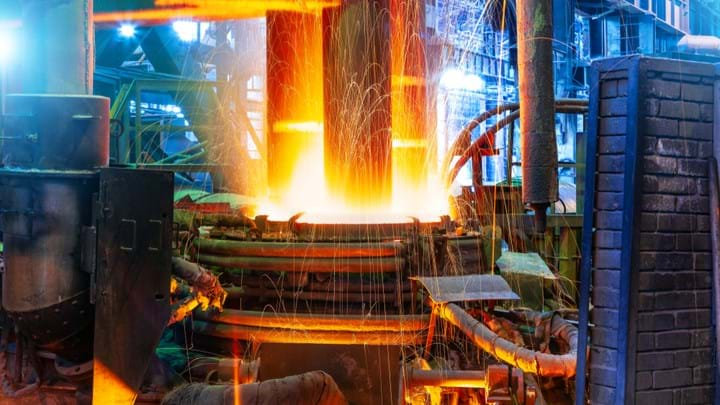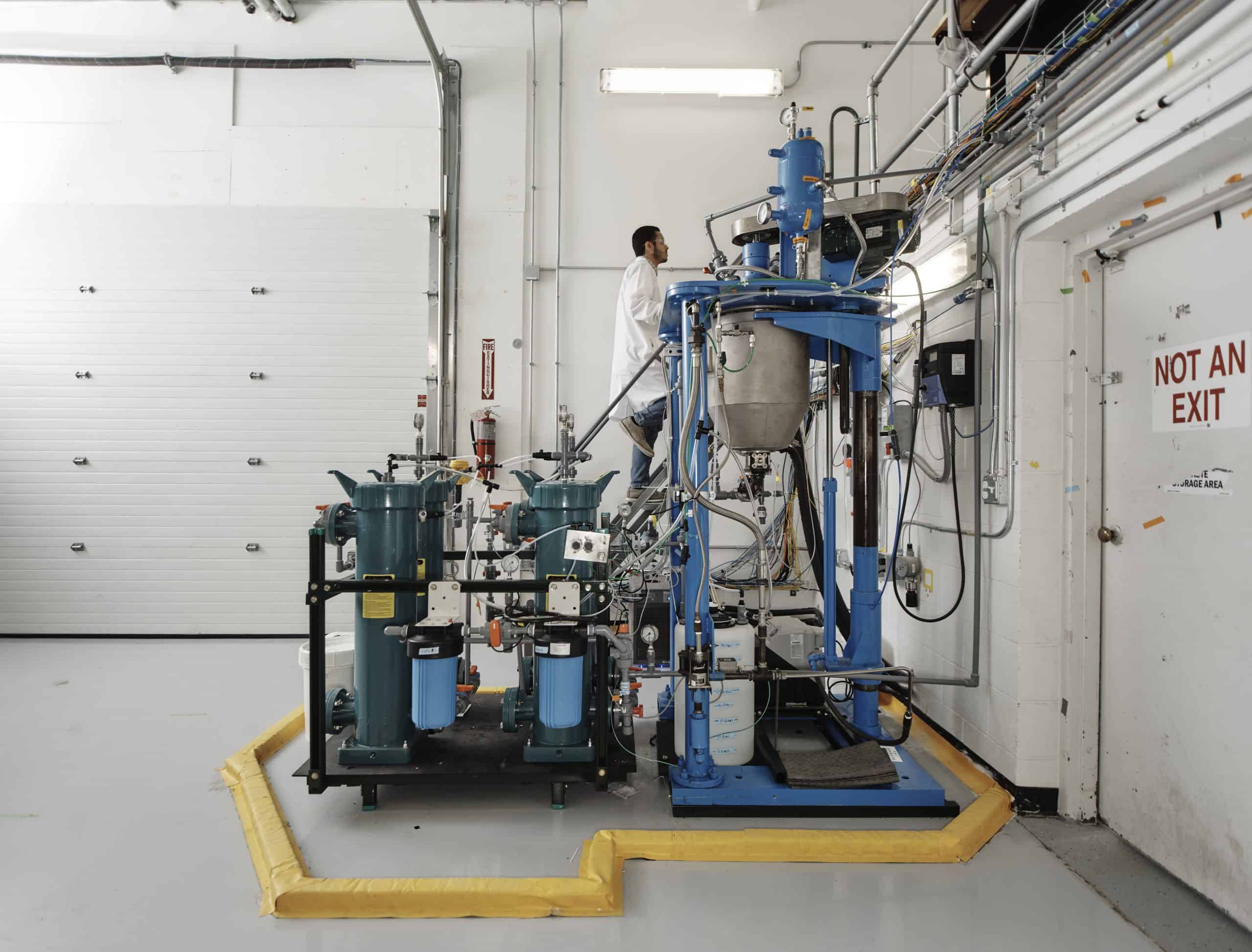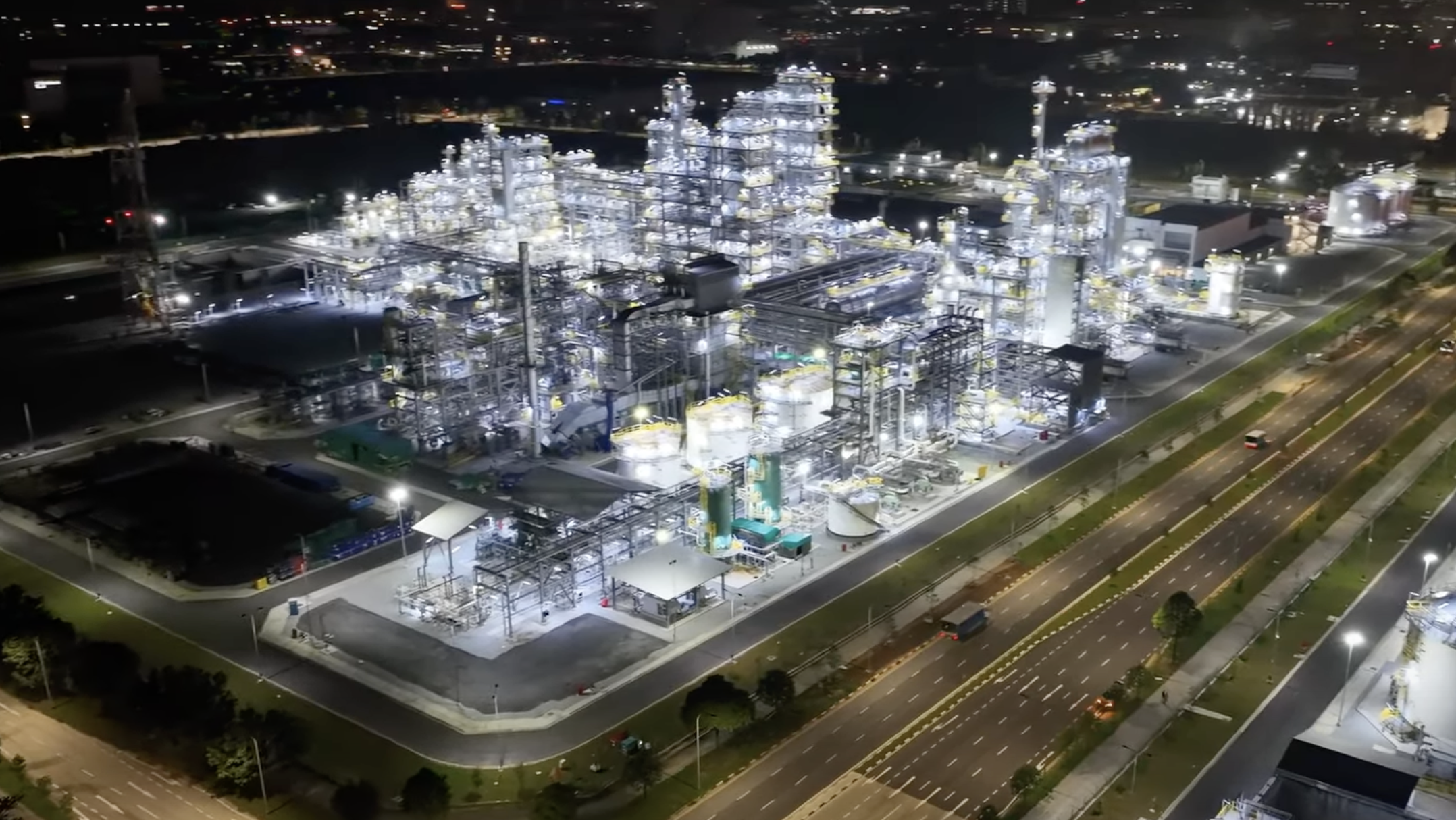Analysis
Decarbonisation Pathways in Hard-to-Abate Sectors: Key Trends to Watch
Navigating the transition strategies reshaping cement, steel, and aviation industries
Mar 12, 2025 @ London
Hard-to-abate sectors present both the greatest climate challenge and investment complexity, with transformative technologies and financing strategies poised to unlock transition pathways.
The pathway to a net-zero economy is neither straight nor uniform across all sectors. While renewable electricity and electric vehicles have established clear decarbonisation trajectories, several critical industries—collectively known as "hard-to-abate" sectors—face significantly more complex challenges in their transition journeys.
These sectors, including steel, cement, chemicals, aluminium, and aviation, share common characteristics: high-temperature heat requirements, process emissions beyond energy use, long-lived capital assets, and complex value chains. Together, they account for approximately 30% of global CO2 emissions and remain essential to modern economic activity—making their transition both challenging and imperative.
The Investment Landscape: Risk and Opportunity
For investors, hard-to-abate sectors present a dichotomy of climate risk and transition opportunity. Historically, many asset managers have addressed this complexity through exclusionary approaches—simply avoiding high-emitting sectors. However, a more sophisticated understanding is emerging that recognises the critical importance of financing the transition of these essential industries.
The Transition Pathway Initiative (TPI) data reveals that many companies in hard-to-abate sectors currently fall short of alignment with Paris Agreement goals. Yet this gap represents not only risk but also potential investment opportunity for transition outperformers. The investment case becomes clearer when examining sectoral pathways against both 2030 and 2050 timeframes.
Steel Production: Multiple Routes to Decarbonisation
The steel industry, responsible for approximately 7-9% of global CO2 emissions, exemplifies the complexity of industrial decarbonisation. The sector faces particular challenges due to its coal dependency for both energy and as a reducing agent in the production process.
Several distinct technological pathways are emerging:
Hydrogen-Based Direct Reduction of Iron (H-DRI): The HYBRIT project—a collaboration between SSAB, Vattenfall, and LKAB—represents the most advanced example of hydrogen-based steelmaking. Having produced its first fossil-free steel in 2021, HYBRIT aims for commercial-scale production by 2026. This pathway offers near-complete decarbonisation potential but requires massive renewable electricity capacity.
Electric Arc Furnaces (EAF) with Clean Electricity: The shift from blast furnaces to electric arc furnaces represents a more immediate transitional step, with potential emissions reductions of 60-70% when powered by renewable electricity. ArcelorMittal and Tata Steel have both announced significant EAF investments across their European operations.
Carbon Capture Utilisation and Storage (CCUS): For existing blast furnace operations, CCUS represents a technically viable but commercially challenging pathway. Despite higher costs compared to hydrogen routes, this approach allows for retrofitting existing assets rather than complete replacement.
From an investment perspective, the steel sector demonstrates significant regional variation in transition trajectories. European producers face stronger regulatory pressures through the Carbon Border Adjustment Mechanism (CBAM) and access to EU Innovation Fund financing, while Chinese producers benefit from centralised industrial planning but face coal dependency challenges.
 Electric arc furnaces offer a near-term transition pathway for steel production when powered by renewable electricity
Electric arc furnaces offer a near-term transition pathway for steel production when powered by renewable electricity
Photo credit: The Chemical Engineer
Cement: Addressing Process Emissions
The cement industry presents perhaps the most fundamental decarbonisation challenge, as approximately 60% of its emissions derive from the chemical process of calcination—the conversion of limestone to clinker—rather than from energy use. This makes the sector uniquely difficult to abate through electrification alone.
Key technological pathways include:
Alternative Binding Materials: Companies like Paebbl and Brimstone are developing novel cement chemistry that eliminates calcination emissions. These approaches remain pre-commercial but offer theoretical emissions reductions of 80-95%.
Clinker Substitution: Reducing the clinker-to-cement ratio through supplementary cementitious materials offers immediate but limited emissions reductions, typically 20-40%. This approach is already widely deployed but faces raw material availability constraints.
Carbon Capture: Given the concentrated CO2 streams in cement production, CCUS represents a particularly viable technical solution. However, the economics remain challenging without substantial carbon pricing or incentives.
The investment timeline for cement decarbonisation extends further than many other sectors, with meaningful commercialisation of breakthrough technologies unlikely before the early 2030s. This creates particular challenges for near-term transition financing, making sustainable bond frameworks and sustainability-linked bonds (SLBs) increasingly important financing mechanisms.
 Photo credit: Sublime Systems
Photo credit: Sublime Systems
Aviation: The Sustainable Fuel Transition
The aviation sector's decarbonisation pathway presents distinct challenges from industrial processes, centred primarily on fuel substitution rather than process redesign. With electrification viable only for short-haul routes and hydrogen aircraft still in early development, sustainable aviation fuels (SAF) represent the primary near-term pathway for emissions reduction.
The SAF landscape includes several production pathways:
HEFA (Hydroprocessed Esters and Fatty Acids): Currently the dominant production method, converting oils and fats into jet fuel. Companies like Neste lead production, though feedstock limitations constrain scalability.
Power-to-Liquid (PtL): Converting renewable electricity, water and captured CO2 into synthetic fuels offers theoretically unlimited production potential but faces high costs and energy intensity challenges.
Alcohol-to-Jet (AtJ): Converting ethanol or methanol to jet fuel provides another pathway with growing commercial deployment.
The aviation sector demonstrates significant regional policy divergence. The EU's ReFuelEU Aviation regulation mandates progressive SAF blending requirements starting at 2% in 2025 and reaching 70% by 2050. The US has taken a different approach through production incentives in the Inflation Reduction Act, offering up to $1.75 per gallon for SAF production.
For investors, the sectoral transition timeline shows near-term action through SAF blending but substantial technology risk for complete decarbonisation before 2050.
 Photo credit: Neste
Photo credit: Neste
Financing the Transition: Beyond Green Bonds
The financing mechanisms for hard-to-abate sector transitions reveal both progress and gaps in sustainable finance markets. Traditional use-of-proceeds green bonds have predominantly flowed to renewable energy and green buildings, with limited allocation to industrial decarbonisation projects.
 Source: Climate Aligned Data Platform, 2025
Source: Climate Aligned Data Platform, 2025
Several trends are emerging to address this gap:
Transition Bonds: Designed specifically for high-emitting sectors with credible transition strategies, these instruments remain limited in issuance but offer potential for channelling capital to hard-to-abate transitions.
Sustainability-Linked Bonds (SLBs): With coupon rates tied to sustainability performance targets rather than specific project funding, SLBs provide greater flexibility for companies in transition. However, the setting of ambitious and material KPIs remains critical for credibility.
Blended Finance: Public-private partnerships are increasingly important for early-stage transition technologies, with initiatives like the EU Innovation Fund providing catalytic capital for industrial decarbonisation projects.
The Science-Based Targets initiative (SBTi) has developed sector-specific guidance for heavy industry that is increasingly becoming the benchmark for transition plan credibility. This guidance, alongside frameworks like the IEA Net Zero by 2050 scenario, provides investors with tools to assess transition alignment.
Regional Transition Trajectories
The pace and pathway of industrial decarbonisation shows significant regional variation, creating both challenges and opportunities for global investors:
European Union: Leading on regulatory frameworks through the EU Taxonomy, CBAM, and Innovation Fund, creating both compliance pressure and transition support. European industrial firms typically demonstrate more advanced transition planning but face higher energy costs.
North America: The Inflation Reduction Act has dramatically changed the investment landscape through production tax credits for clean hydrogen, sustainable aviation fuel, and other transition technologies. This approach emphasises building supply rather than regulating demand.
China: Dominates global production in many hard-to-abate sectors and has committed to peak emissions before 2030 and carbon neutrality by 2060. The country's centralised industrial planning creates potential for rapid deployment once technologies reach commercialisation.
Emerging Markets: Face the dual challenge of industrial decarbonisation and continued economic development. Climate finance mechanisms like Just Energy Transition Partnerships (JETPs) are emerging to support these transitions but remain insufficient in scale.
Investment Implications and Timeframes
For asset managers and owners assessing hard-to-abate sectors, several critical considerations emerge:
Differentiated Timeframes: While all sectors face 2050 net-zero expectations, near-term transition benchmarks vary significantly. Steel decarbonisation technologies are approaching commercialisation with meaningful deployment expected this decade. Cement's technological solutions remain earlier stage, with significant deployment unlikely before the 2030s. Aviation begins with incremental SAF blending this decade but relies on longer-term technology development for complete decarbonisation.
Policy Dependency: Returns on transition investments remain heavily dependent on effective climate policy. Carbon pricing, product standards, and direct subsidies all play critical roles in making transition technologies commercially viable.
First-Mover Advantage vs. Risk: Early adopters of breakthrough technologies face both potential competitive advantages and technology risks. Distinguishing between commercially viable transitions and speculative technologies requires sector-specific expertise.
Engagement Priority: Given the limited alternatives to these essential industrial processes, investor engagement remains particularly important. The Climate Action 100+ initiative has identified key focus companies across hard-to-abate sectors where collective engagement can accelerate transition planning.
Looking Forward: Critical Signposts
As sectoral transitions accelerate, several signposts will indicate the pace and direction of change:
Emergence of Green Premium Markets: Willingness to pay for low-carbon industrial products (e.g., green steel, low-carbon cement) is developing but remains limited. The growth of these premium markets will accelerate transition investments.
Policy Certainty: Long-term policy frameworks that survive political cycles are crucial for capital-intensive transitions with multi-decade payback periods.
Technology Cost Curves: Similar to renewable energy and batteries, tracking cost reduction curves for key transition technologies like electrolysers, carbon capture, and sustainable aviation fuels provides insight into commercialisation timelines.
The transition of hard-to-abate sectors represents both a critical climate imperative and an emerging investment landscape. While these industries face complex technical and economic barriers to decarbonisation, the emerging technological pathways and financing mechanisms create new opportunities to direct capital toward meaningful climate solutions in these essential industries.
For investors seeking to understand these transitions, sector-specific analysis that incorporates both technological development and policy evolution is essential to navigate the complex landscape of industrial decarbonisation.
ClimateAligned's technology provides in-depth sectoral transition data across hard-to-abate industries, enabling investors to assess alignment with climate scenarios and identify transition leaders.